Interview
Sydney Cross: The Next Chapter
“The Next Chapter,” is a regular feature in Graphic Impressions that focuses on the lives and work of printmakers who have recently moved into a different phase in their careers.
Andrew Polk is an Indiana-based artist who got his BFA in painting and print from Memphis State University and his MFA in 1977 from Indiana University. He spent 40 years teaching printmaking including 32 years at University of Arizona in Tucson where he also founded L Vis Press with Kathryn Polk, his wife of over 50 years.
His work has been featured in innumerable solo and international or invitational exhibitions nationally and internationally. Andy continues to teach lithography and printmaking workshops around the country. Andy and Kathryn have now relocated from Tucson to rural Indiana, a sort of reversal of the expectation for retirees!
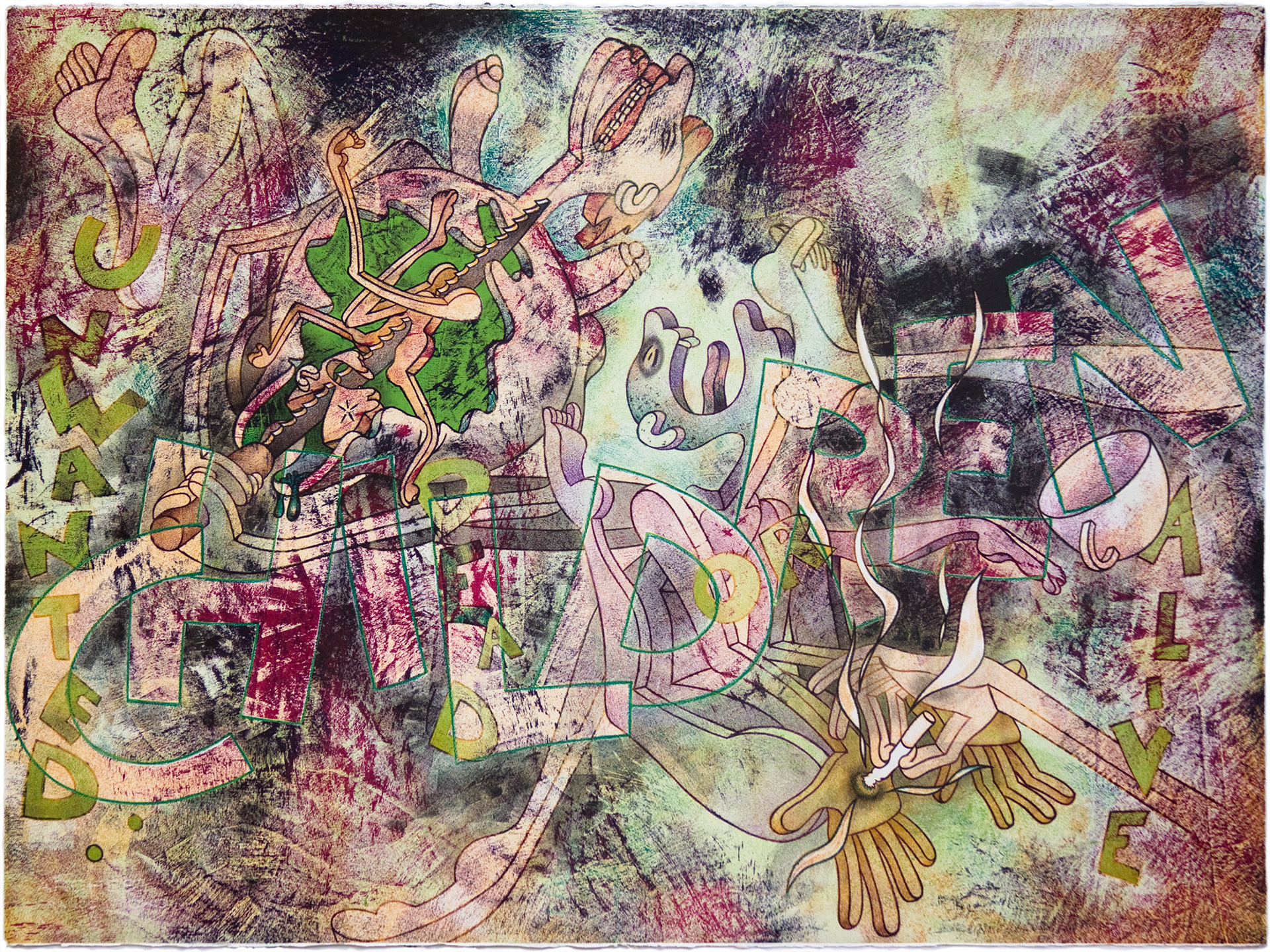
Unwanted Children

American Marsupial
Advice for Younger Artists
Get people to know who you are. I can’t tell you how many galleries I approached cold and just walked into the door and said, “Hey, I’m an artist and I got some work. Would you show it?”
The Interview
Blake Sanders: It seems inconceivable that you retired from Clemson seven years ago! Please walk us through the motivation to walk away when you did, what drew you to California, and how you moved a thriving print career across the country.
Sydney Cross:
My retirement from Clemson was a planned exit, five years in the making. I had built a program with great support from the department. I had served in many capacities for the department, my students, the college, the university, and hopefully my profession as a printmaker and artist. It was a good time to hand the reins over. I retired from that position but not from teaching or my studio work. To that end, I mean that I will always have a commitment to all the students I have had and have. Some duties are never final.
I had quite a surprise at my retirement sendoff from the department. Unbeknownst to me, my alumni and current grads organized a portfolio exchange with the theme of ‘What Did We Learn from Syd’. When I walked into the gallery, where they were holding my retirement party, an exhibition of that surprise portfolio exchange was installed! Even my very first grad student, Steve Chapp, had participated. I was so stunned and so honored! I spent the summer creating my own edition of an image to honor all of them for what THEY taught me, shipping them off to each participant! One has expectations about what a retirement send off might be like for them—I never expected to feel so inspired and humbled.
Shortly afterwards, Steve Chapp, who lives nearby, and I talked about seeing if there would be enough interest amongst other artists and printmakers in the area to start a group. The idea was embraced by many artists and printmakers in the area! The Contemporary Print Collective , CPC, was born. We found a home for monthly meetings and events at the Greenville Center for Creative Art that was housed in an old textile mill. I was there for two years to see it all get off the ground. I am proud to say that it is still very much active and the GCCA opened a print studio last Fall.
I moved to California because my husband was still running a family business located there. As it also happens, my whole family remained in the West for the thirty-five years I spent working in the South. It was nice to be closer to them when I moved to California. In 2018 we moved into a house that had a separate building in the back of the lot that became my studio. I brought my press and much of my other equipment with me. I have continued with lithography, monotypes, relief printing and screen printing. Yes, I have a graining sink on the patio off my studio and still grain litho stones all by myself—Retirement doesn’t mean you are suddenly physically impaired!
I also applied for membership to the Los Angeles Printmaking Society after arriving here and was asked to serve on the Board. I have made lots of new friends through that group and it is an active organization with exhibitions and some outreach activities. I am currently the recording secretary for them.
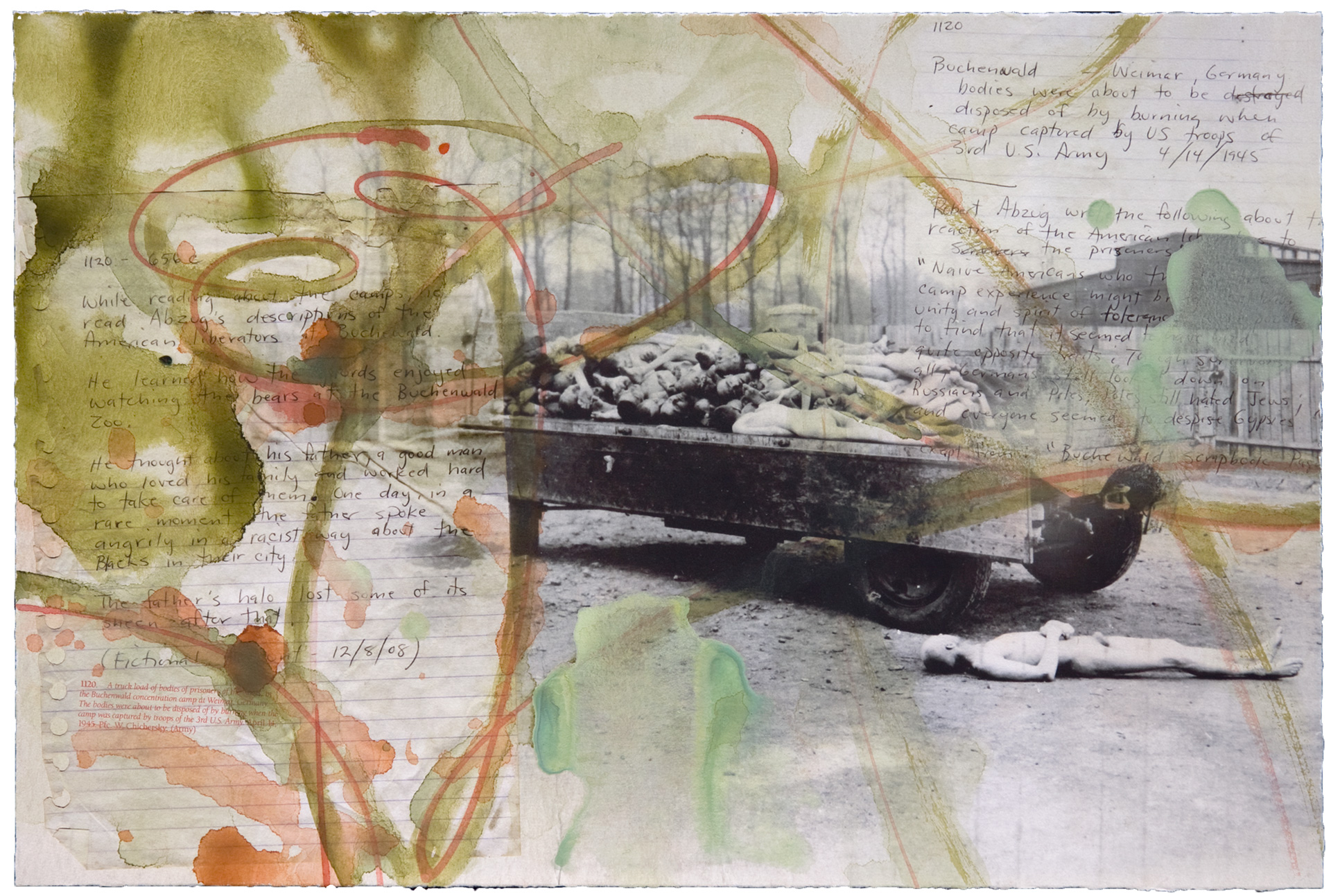
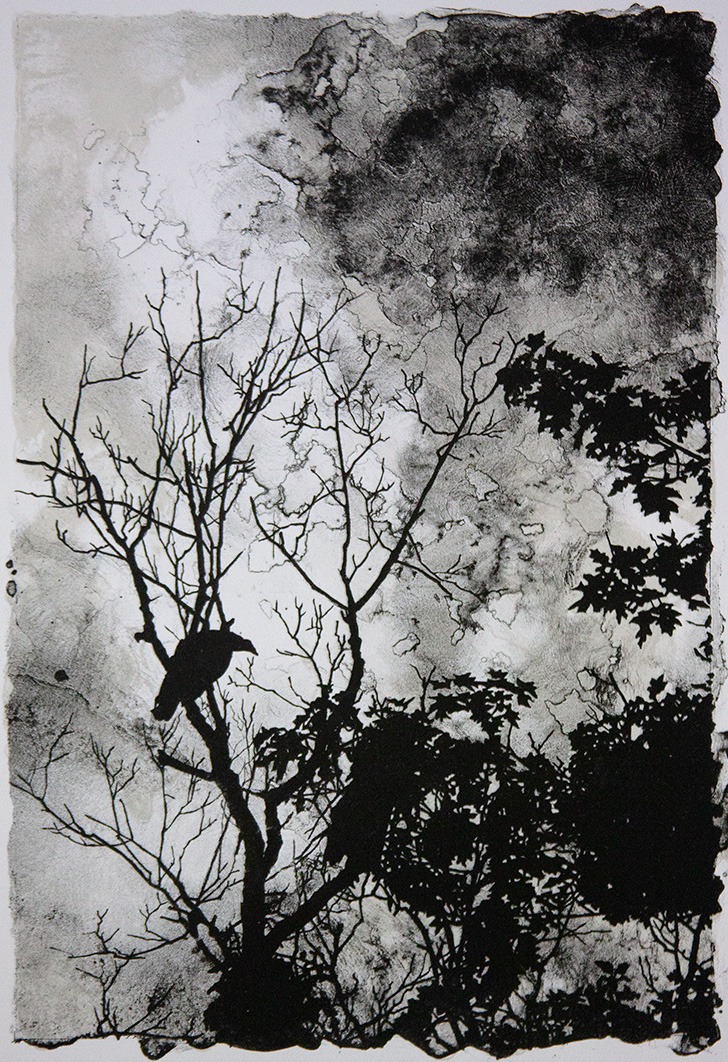
Mourning Scene
B: You started teaching in a tenure-track position soon after graduate school at an institution where the professional expectations surely affected your career projection. When you came to California you began teaching part-time at Cal State Northridge. How did that shift from TT to part-time affect your teaching? Do you recommend the experience to other post-TT professionals who may enjoy getting to teach unencumbered by service and research expectations?
S: As Clemson aims to be a top tier research institution it is demanding on the faculty to be as professionally active as possible. In my first year at Clemson (1981) I attended my first SGC meeting at a SECAC Conference in Oxford, MISS. I met Boyd Saunders, Roger Steele, Bernie Solomon, Tom Dewey and listened to a presentation on how to organize a Juried National Print Exhibition. I returned to Clemson and met with, Tom Dimond, Director of the Rudoph Lee Gallery, who was enthusiastic about the idea. The following year we hosted our first of many Clemson National Juried Print and Drawing Exhibitions. That event instantly gave much needed visibility to the department and we started seeing the grad applications go up, across the board.
From there, I continued to attend conferences, especially SGC or SGCI as it is known today. I served as vice president then President in 2000. Along the way in my career, I wrote grants, secured artist residencies, did research for panel presentations, continued my own technical research in lithography, and of course workshops. As many professors today, I brought students to as many of these events, especially SGC, as I could. In those days Clemson had a motor pool and I would reserve a van. The students and I would load up and drive where ever the conference was, New Jersey, Texas, Ohio, Kentucky, or Florida—didn’t matter. I believe that exposing the students to this larger family of artists and printmakers was critical to their education.
In 2019 after settling in LA, I received a call from Cal State University, Northridge to come teach part time for a year. It couldn’t have been more welcome, not that I didn’t cherish the free time of retirement but I missed the students and the way teaching nourishes a studio. AND, of course, it was fantastic to teach unencumbered by committee or service work. I could teach and spend as much time as the students needed me, come in to open the studio or spend more time grading, which for me, means writing feedback to each of my students. It is luxurious. I have taught a total of four semesters but I temporarily stepped away from teaching this Spring to help take care of family. Through CSUN and the Printmaking Professor, Michelle Rozic, I have had the honor of teaching and working with a very diverse group of students, very different from Clemson University. This diversity is a natural reflection of the local demographic. CSUN is also mostly a commuter school with no institutional emphasis on a credentialed athletic team so there is a very different culture regarding mission and resources.
B: There appears to be an aesthetic and thematic through line in recent work that is remarkably consistent with the work you’ve been making for some time. Ecological concerns, and the ways in which humans hold themselves apart from nature, are themes in your work that have often aligned and inspired my own. Your prints often feature the big conservation stars like polar bears, elephants, and rhinos. They’re like the sympathetic spoonful of sugar that helps the medicine of species extinction and climate change go down! Is there, perhaps, a similarity in the way you give viewers a friendly access point to your content and the way the public consumes art and/or media more broadly?
S: I believe my work has evolved in many ways, technically and theoretically but the theme remains steady. That is, I have a great concern about the value systems we operate from. What are the hierarchies that shape our actions and choices? More importantly, how does this context affect the way we regard the environment and the other inhabitants with which we share this planet? Climate change, pollution, endangered species, habitat loss are common buzz words, but I have been worrying on them since I was twelve years old. My commitment to the subject has led me to Elizabeth Kolbert’s book, “The Sixth Extinction”, which puts into focus how urgent and critical it is that we take action to at least begin to stabilize environmental conditions. I have read this book twice and almost everything else she has written to stay informed on the science and practical actions we might take to delay the Anthropocene.
The human condition is integral to the conversation about the environment and the values we apply to action and inaction. In some of my work I quote from commercial consumer imagery and combine that with, as you say, the obvious conservation players. Luxury goods, interior design, and fashion manipulate and process nature to embellish and enhance our lives—even, entertain. I am just as complicit in the desire to have nature be a beautiful presence in my life. I am drawn, like others, to the slick posed images in advertising that make one attracted to what they are selling. I see a parallel between those modes and my own desire to make work that is visually rich and alluring. I use images of domesticated animals as well as those in the wild to point to the differences in how we value them. Human figures play a role that represent the selfishness of human nature. An animal skeleton or fossil of an extinct species may offer levity to the giddiness over a designer handbag. If it isn’t obvious enough I also include text. Maybe it is the didactic impulse of a teacher that I can’t shake, but I am looking to be very deliberate in some of my messaging.
In 2016 I had a one person exhibit at the Riverworks Gallery in Greenville, SC titled: “Perpetual Surrender”. The title refers to my need as an artist to perpetually pursue not only meaning with my work but the satisfaction I have in rendering and surrendering to the medium as to create work that, upon a second look, delivers more than was anticipated. The title also refers to my tendency to Perpetually Surrender to the beauty of nature and the beauty of my processes.
Recently, my work has been mostly stone lithography and woodcut. I have the freedom of time to grain stones and do almost all of my image development on them. There is nothing like drawing on a stone—its better than most paper. The lithographs are a location for a dystopian view of an imagined condition stemming from my reading about climate change. I see the woodcuts as a more graphic and direct representation of nature, sometimes interrupted by an arbitrary gesture as if to highlight how careless nature is regarded. Employing wood seems an appropriate substrate as the grain and knots of the tree are included in the image development, driving home importance of nature as a source for materials and the very air we breathe.
It seems to me that nature must make itself useful otherwise it’s not sustainable not profitable enough for saving. Who cares about an obscure insect, frog, or a bat? Hopefully by now we all realize that they are the canary in the mine, revealing to us our own vulnerabilities and insensitivity. So, in my work, I wrestle with what are the best ways to employ technique and imagery in order to share my fear, my dread, my hope for what I love and think is important. I think that is what most artists do no matter the subject.
Studio Visit
B: Is there an inherent conflict between the historically dirty medium of printmaking and your environmental concerns? How has your practice shifted over the years to square those priorities?
S: As a printmaker, I am lucky enough to have come after a generation that resisted safety concerns over materials. Unfortunately, some of that generation contracted kidney failure and other maladies for being so cavalier. In 1981 when I arrived at Clemson the only screenprinting that was being done there were with awful old fashioned solvent based inks. There was no adequate ventilation in the studio so I literally had the university take all of it away. A few years later after more choices were available for water based stencils and inks we rebuilt the area. As for Lithography I am still experimenting with how best to replace asphaltum but I have been using vegetable oil for clean up for years. I believe these practices are better for the environment BUT it doesn’t eliminate all the environmental concerns. One could justify printmaking chemistry and techniques by comparing them to more harmful art processes but I think a lot of what we use in Printmaking today are less harmful than some of the cleaning products that folks use in their homes. One regret I have is not being able to capture the emulsion that I spray out of screens between exposures. If anyone out there has an answer for this?
Buffing Video
B: Service to the printmaking community has been a constant in your career. Can you speak to why that has been a priority and how that service has benefited you in return?
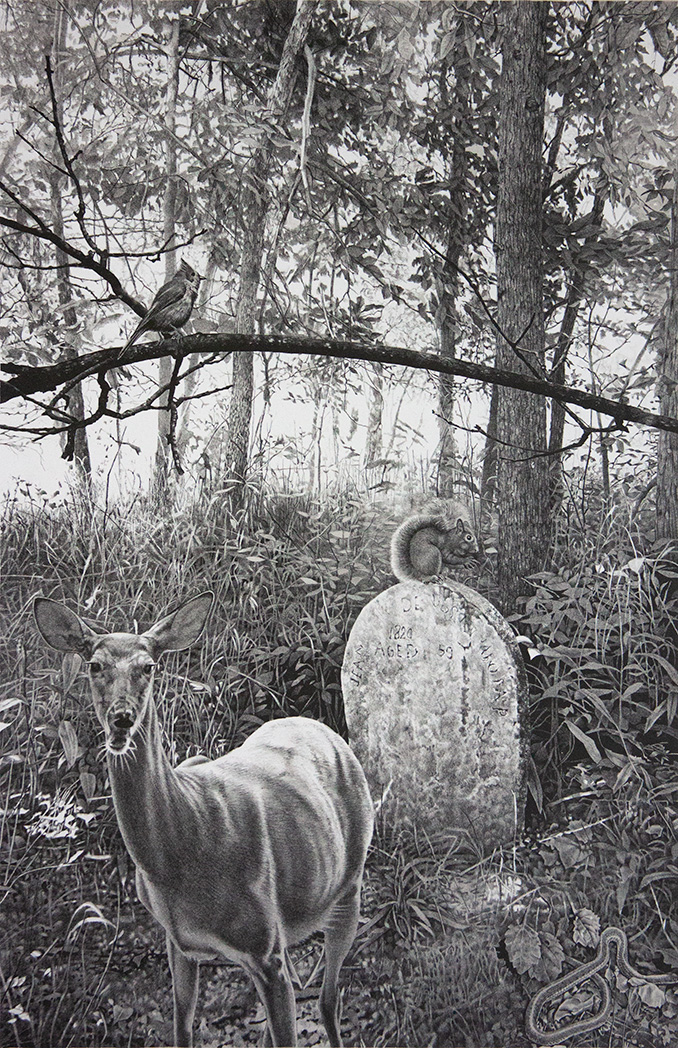
Jean Zinks Grave
S: Service is important for the obvious reason of ‘giving back’ to the community. It offers an engagement in a community that is rewarding to myself to see others receive benefits from what I do. I also don’t view service as isolated from education. You always learn something even if you are the one contributing service. It is a good example to set for students as it reinforces the earnestness of what you are committed too, whether it is academic or professional. In my case, professional and academic service were an expected component of annual performance at Clemson. My final University committee was participating in a mapping out of a 2020 Campus Plan in which I was able to have included a dedicated Art building.
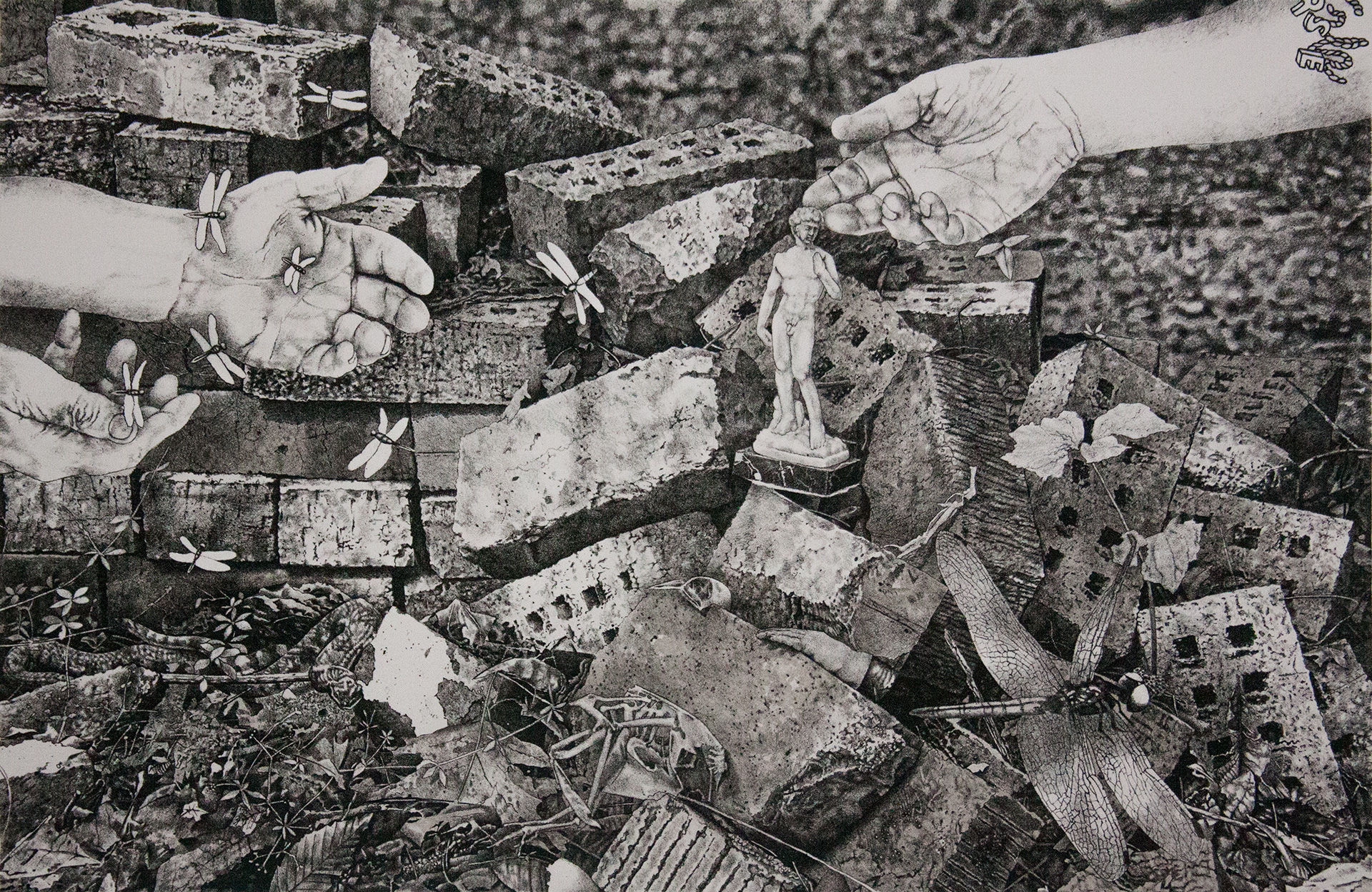
David and the Giants
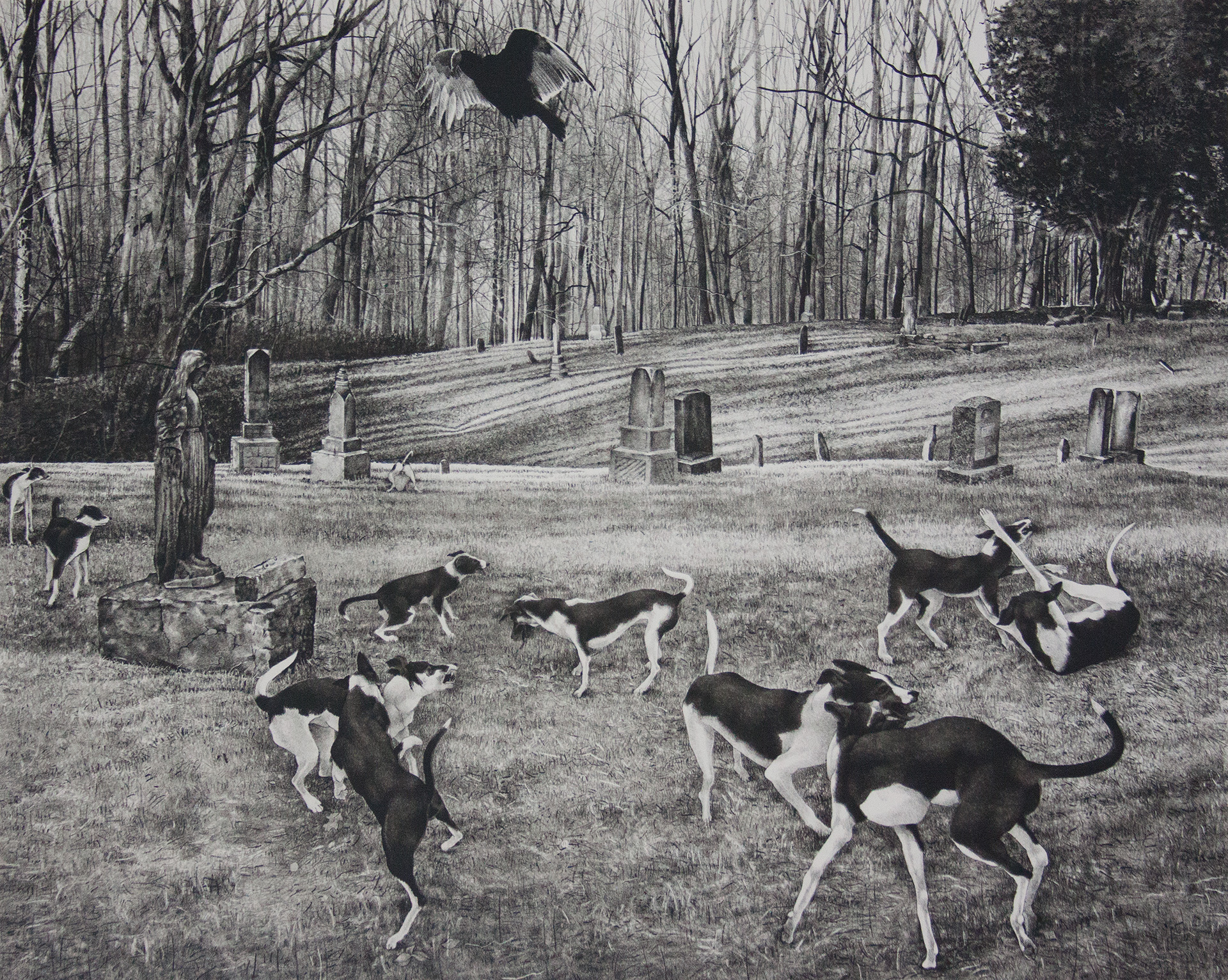
Cemetery Dogs
B: This feature is meant to keep members involved in the organization after transitioning away from a full-time academic career. Do you have any advice for SGCI members and/or the organization leadership going forward? As a former SGC president you have a particular insight. What would you like to see happen next?
S: This is a good question! Every time I attend an SGCI I think of a bunch of things that I think should be explored. The last time I attended they were having these breakout sessions or maybe they were round tables—anyway, the one I attended was on education. Watching what my final Clemson students (graduate and undergraduate) were navigating in their careers it seemed imperative that they should be exposed to expanding the practical and technical applications of their studio practice. For instance, one of my seniors showed an interest in graphics but not necessarily graphic design. I suggested a particular packaging science class because I knew the professor came from a humanities back ground. That experience launched him into a career of 3-d printing and design and he now has a commercial studio in Atlanta. My own niece, who has a degree in environmental engineering, is making a living doing ‘photo lithography’ for Hewlett Packard in a lab. This leads me to think that SGCI might consider making a point to invite folks outside the sphere of printmaking, as we know it, not just to reach across disciplines but into industry. I know this is not new. Carmon Colangelo had a robot scientist from Carnegie Mellon do the key note at the Remote Sensing SGC at West Virginia back in the nineties. There are numerous other examples over the years. BUT, since then the boundaries between disciplines have blurred even more. Academia seems more willing to combine or fund combined efforts between areas of study. The emphasis on ‘Mastering’ a discipline must now also include being a ‘Jack of all Trades’ in order to be applicable to the moving target of technologies and content.
B: Thank you so much for sharing with us.
For more insight into Andy, his career, and what he is up to now, please watch the video and view the gallery below.
Matthew Willie Garcia, MFA
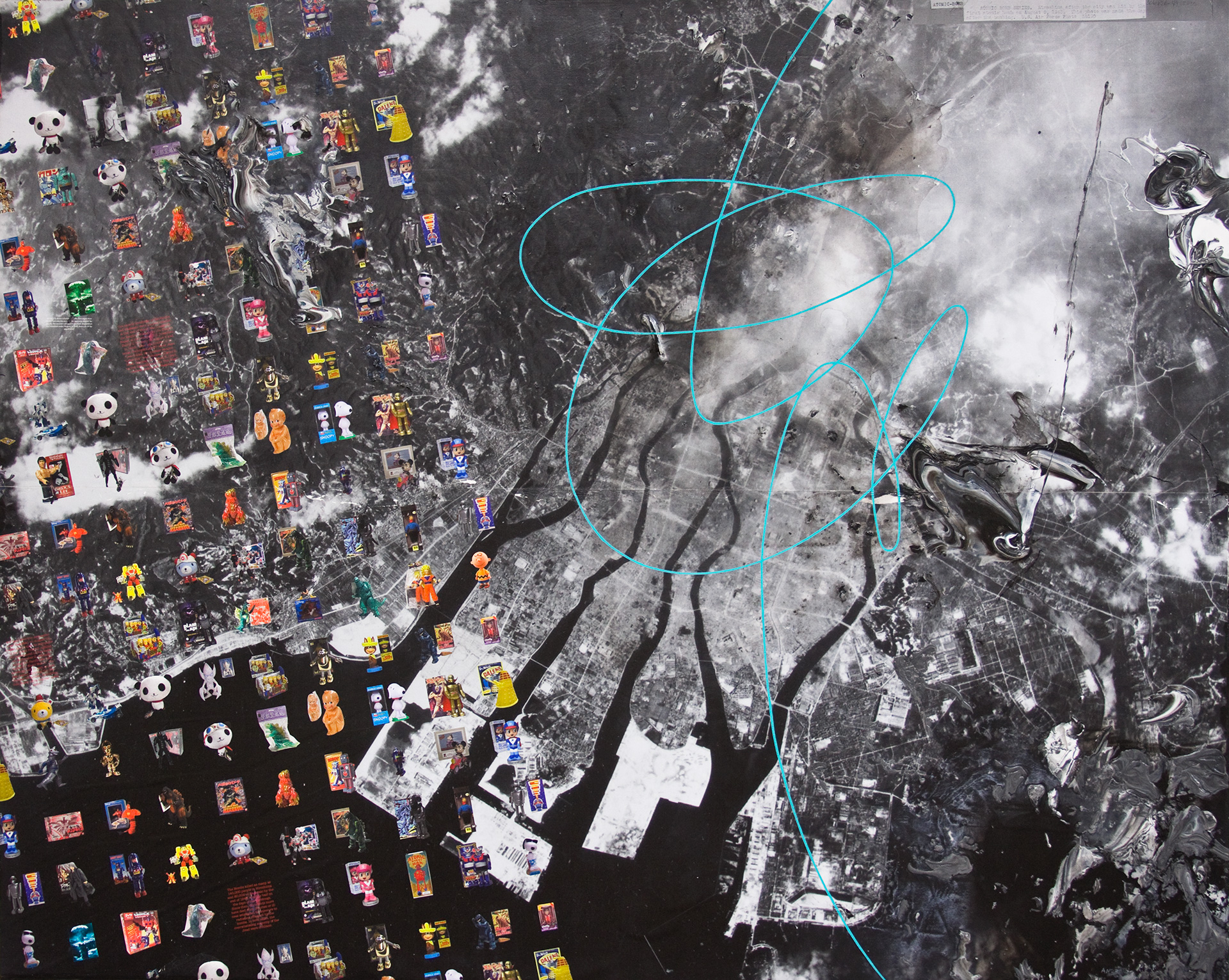
Birth of Godzilla
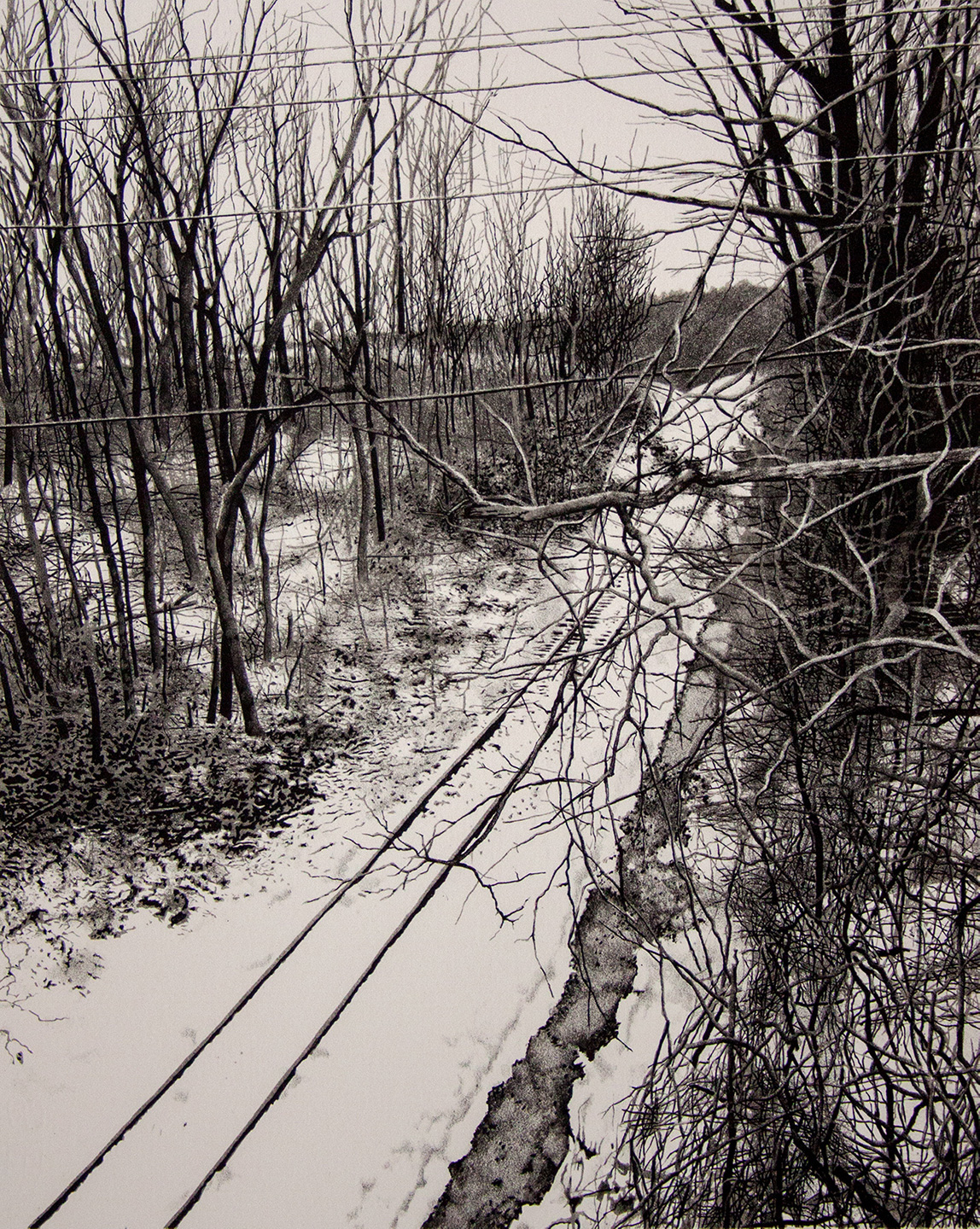
Track to Tralmafadore
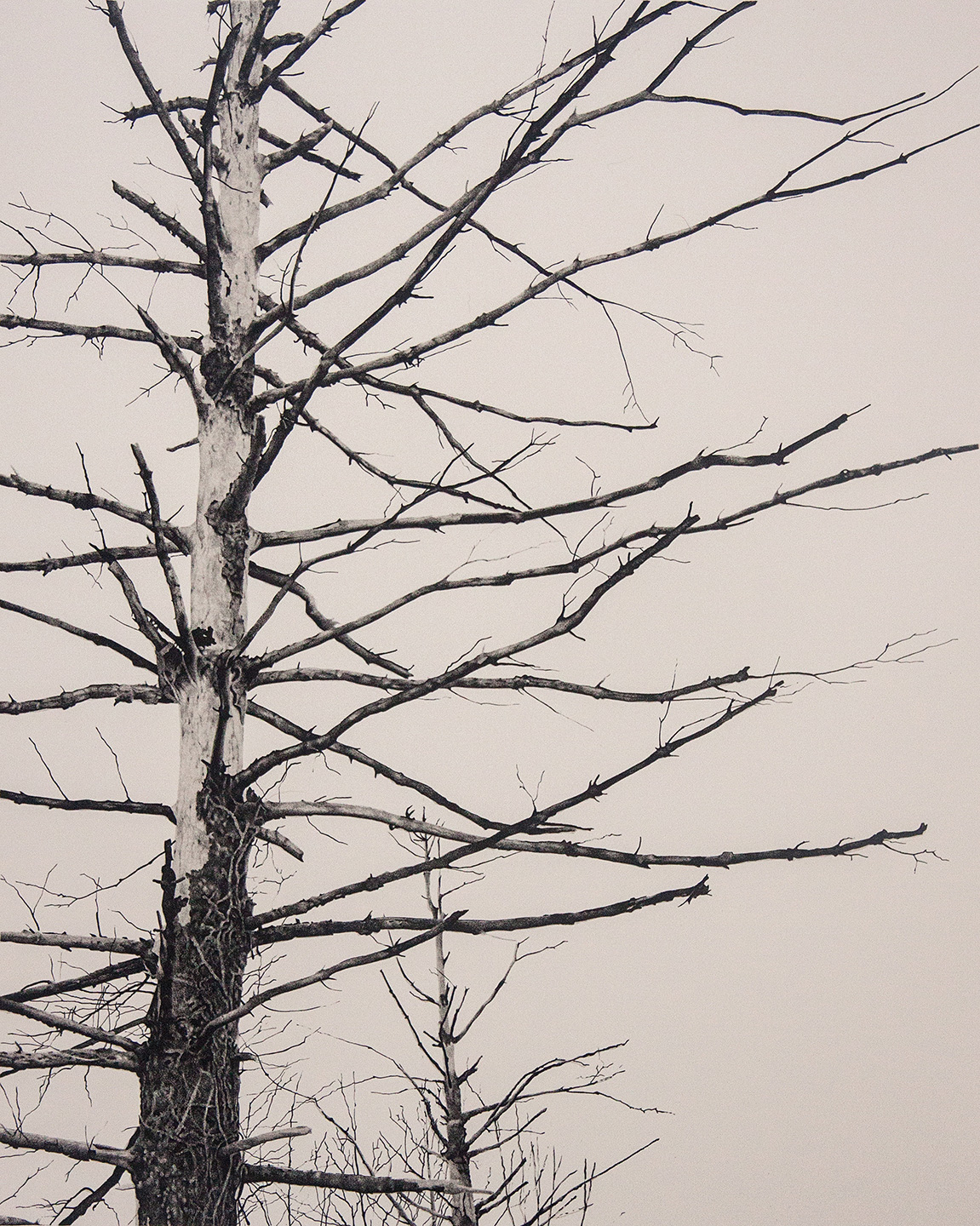
Standing Dead Trees

Looking Up at a Splintered Sky
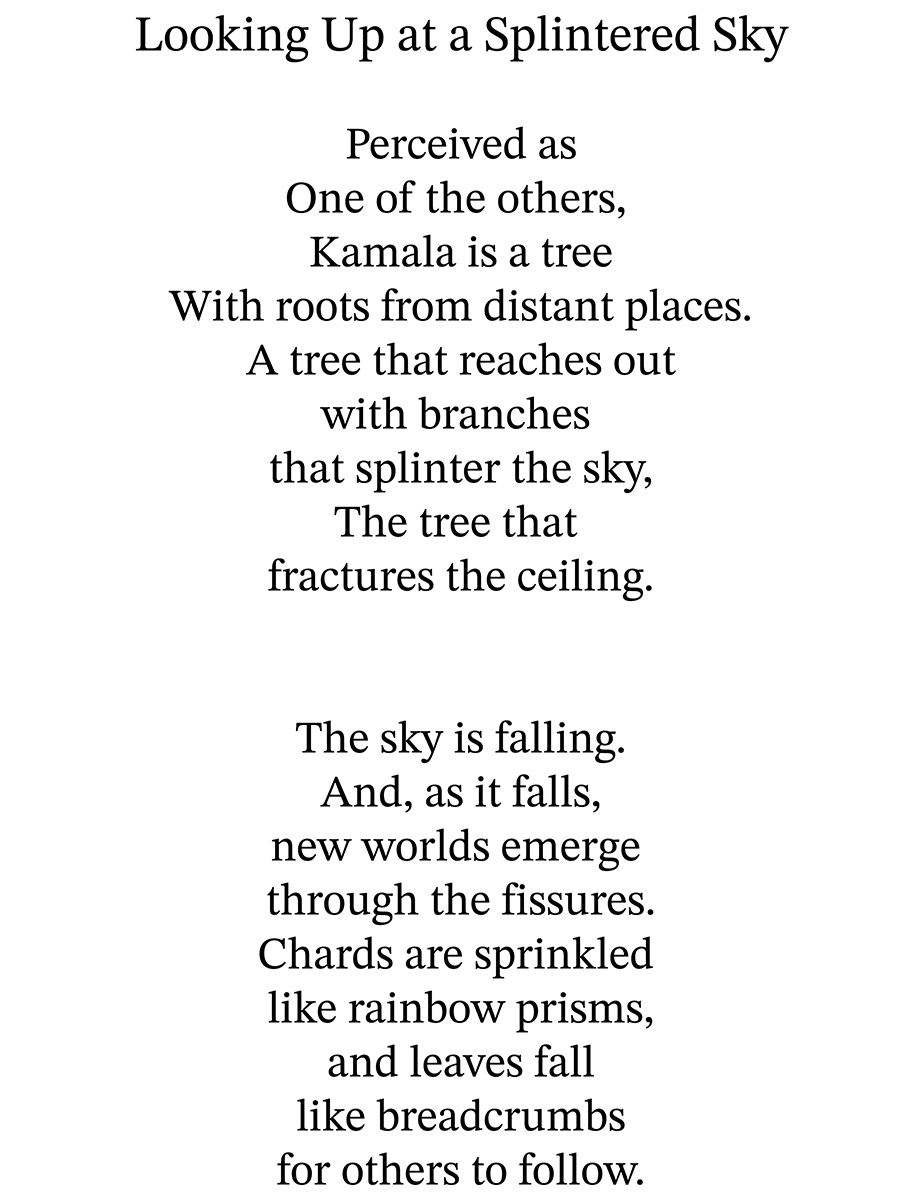

Yard Ornaments

Fear and Apprehension

Intersecting Histories
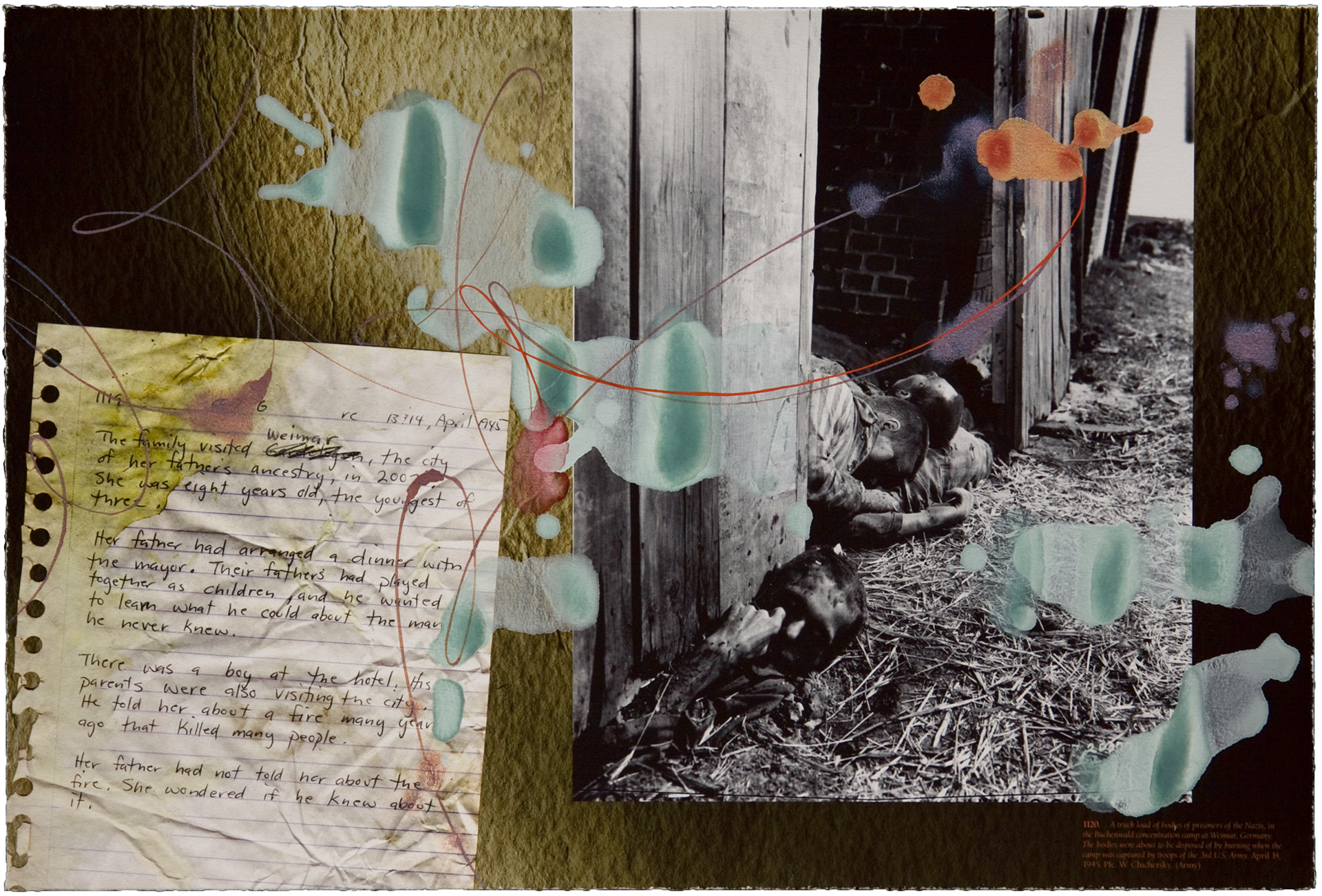
Dinner with the Mayor
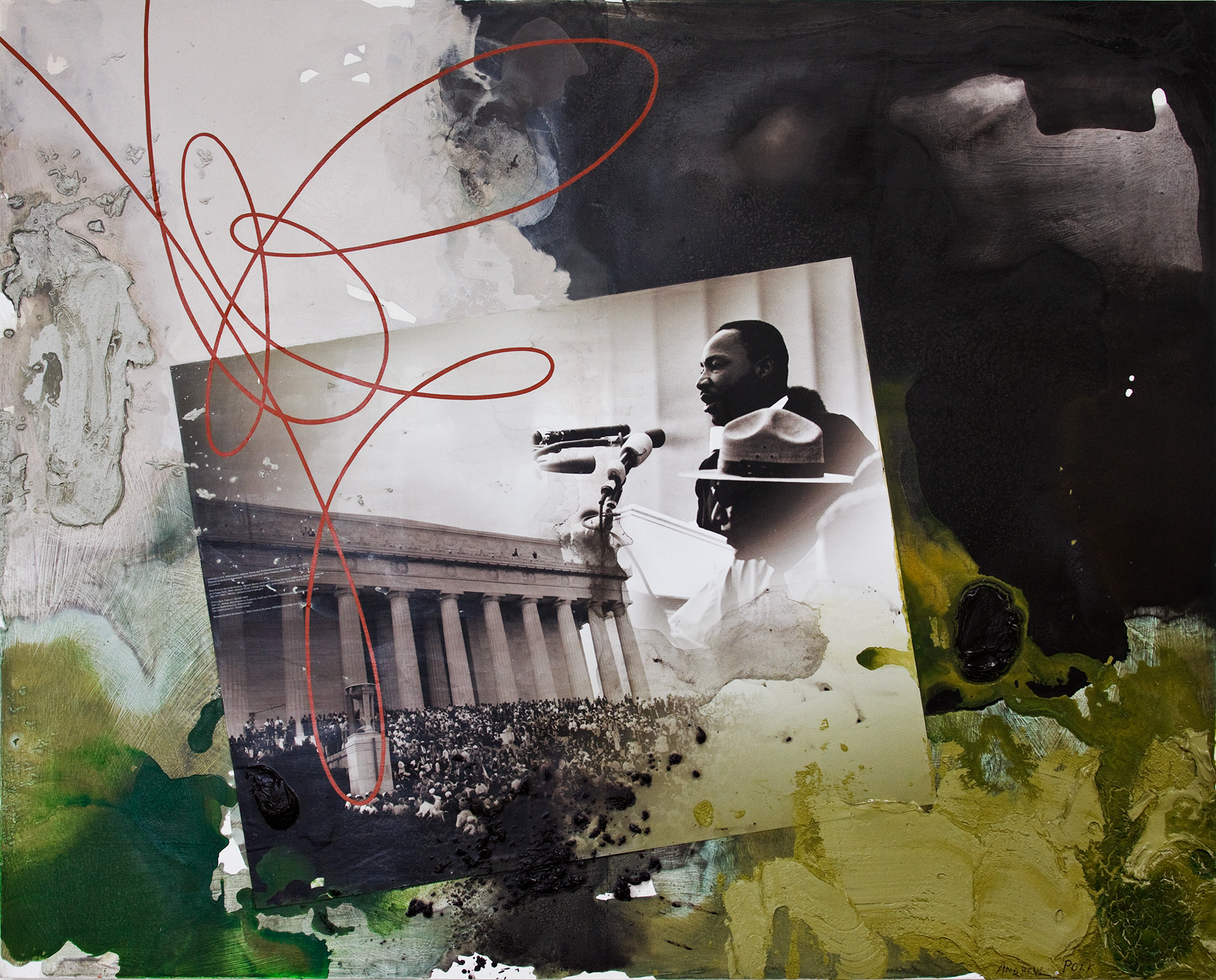
The Dream
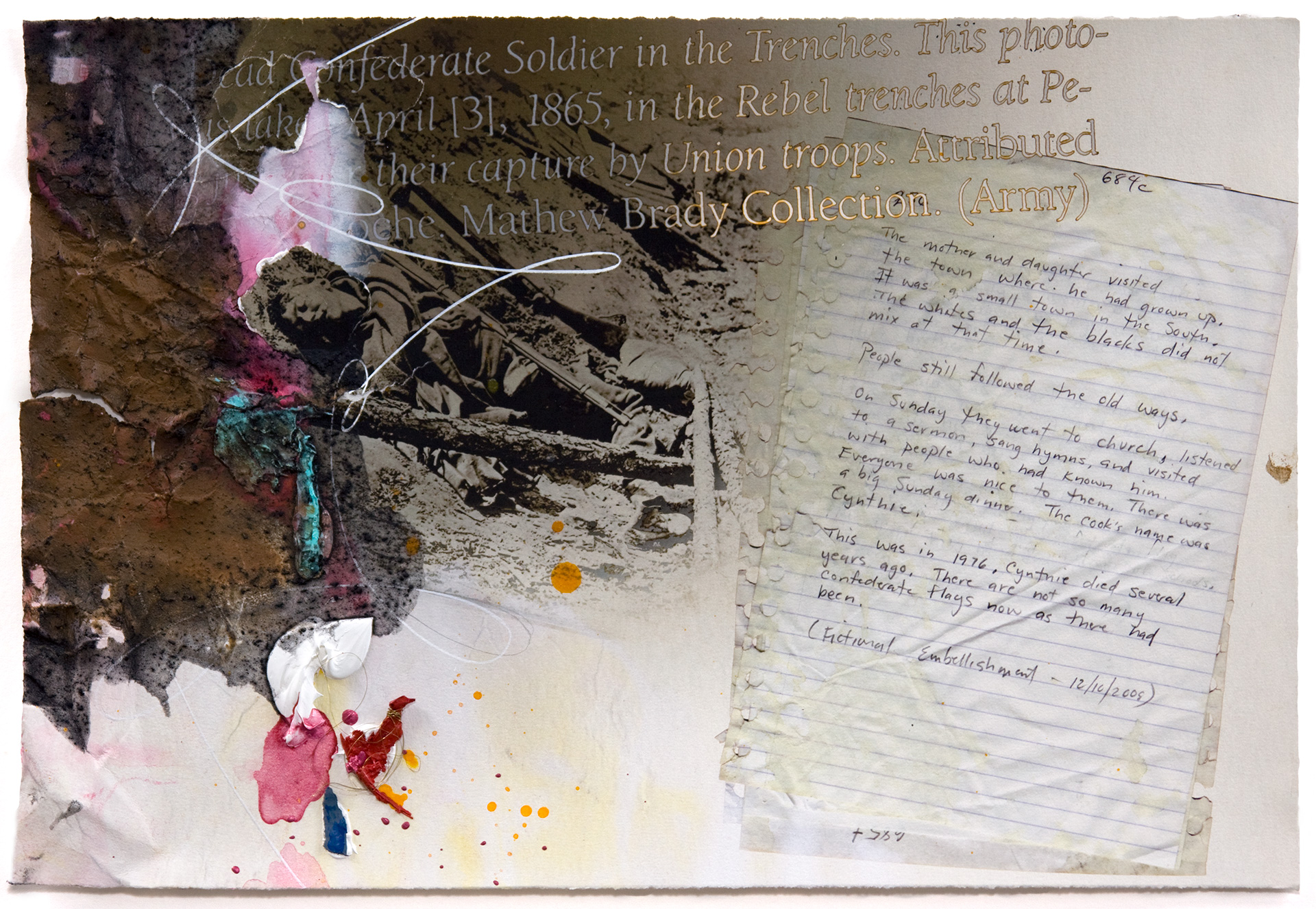
Remembering Cynthie
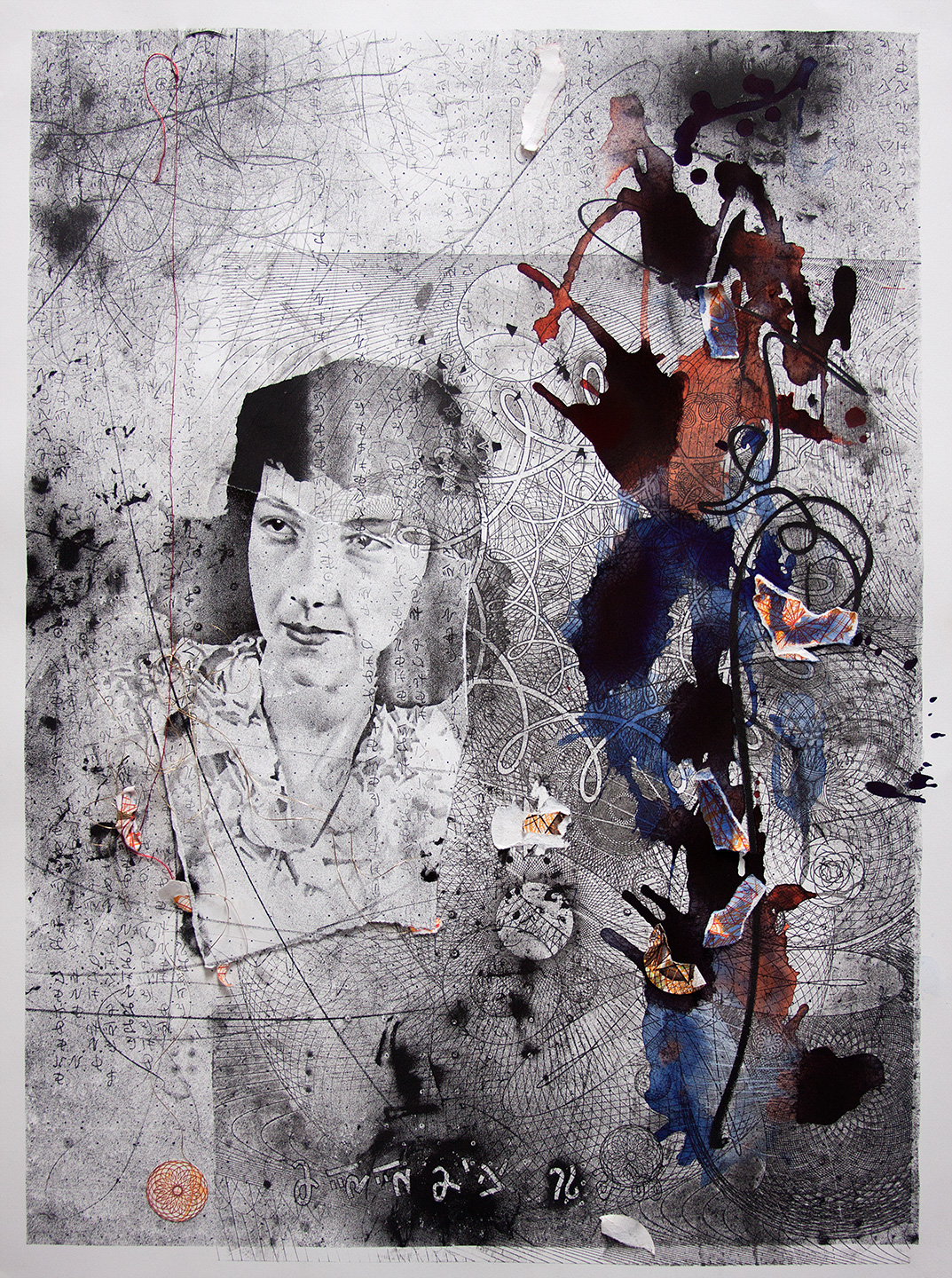
Anna's Way
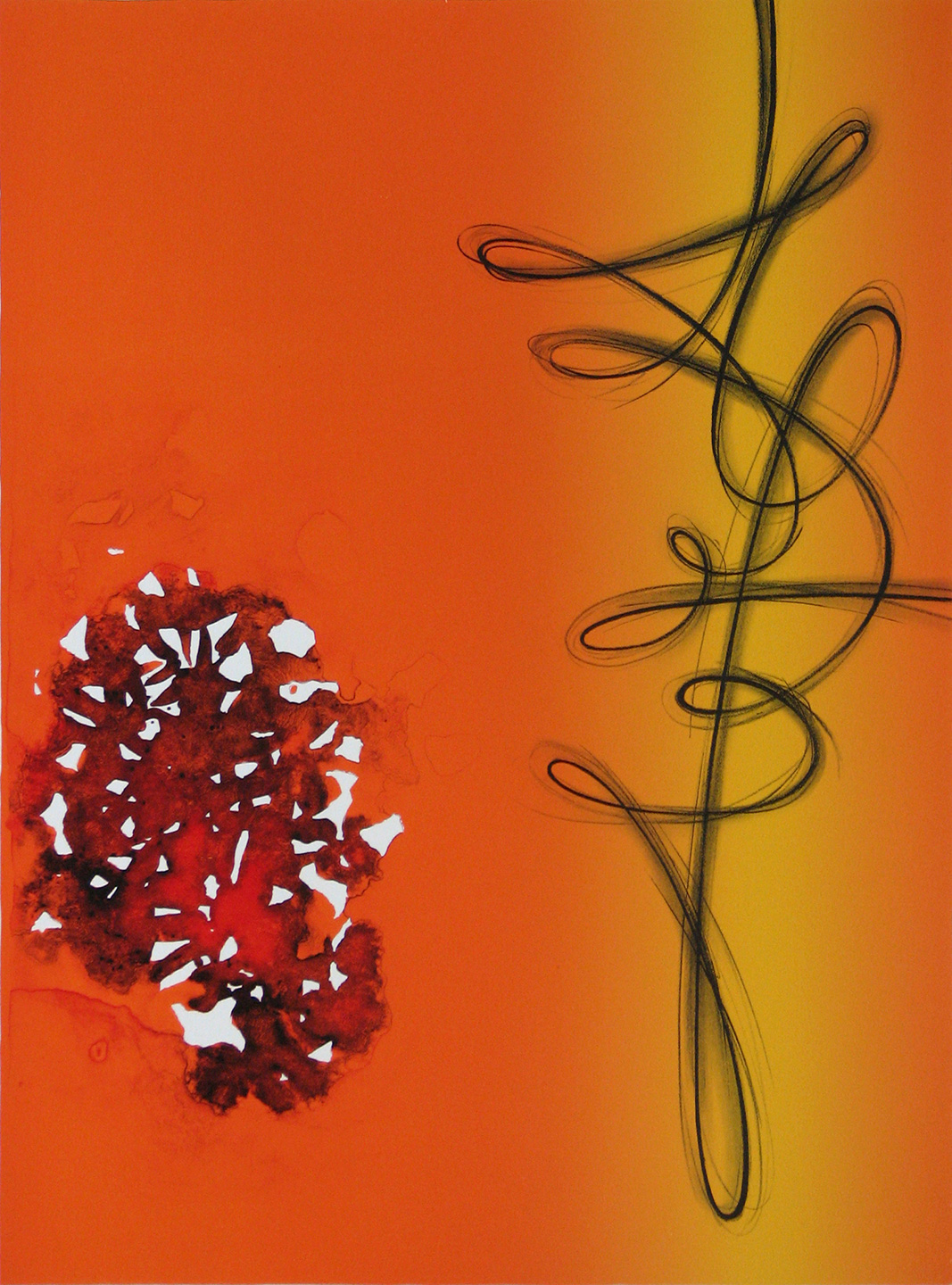
The Music and the Pain
